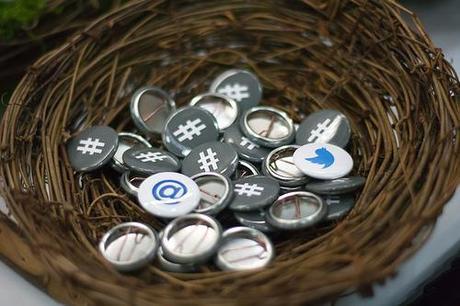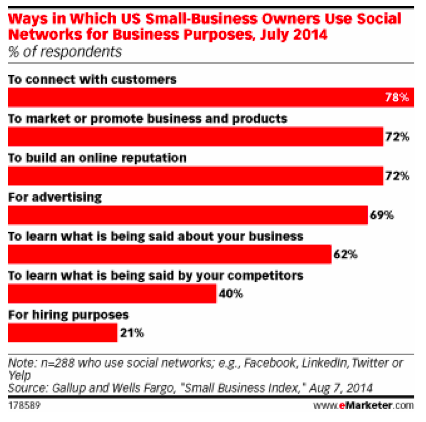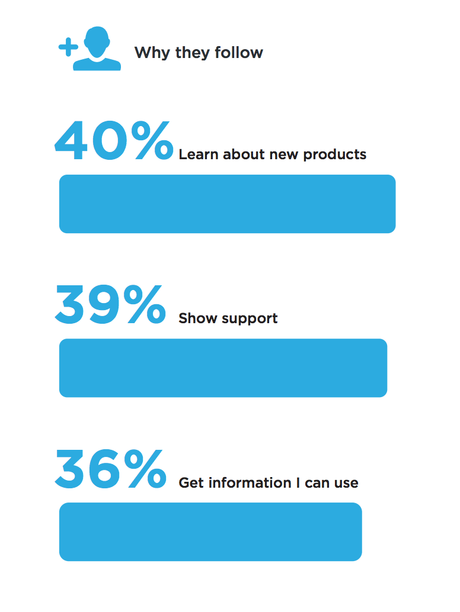 Social media certainly isn’t the only thing that small to midsize businesses (SMBs) can do to connect with their customers, but it is a channel that many are using. According to a survey by Gallup and Wells Fargo, the biggest challenges small to midsize business reported was twofold: identifying and finding new customers and marketing their businesses. By the way, this data is really interesting, especially as it delves into the importance of corporate websites, the integration of technology, etc., but you’ve got to hang in there until you get to about page 26 for that info. The survey indicated that most small and mid-sized businesses are reaching out to consumers through social networking channels like Facebook and Twitter. Nothing shocking there, but chances are good that their efforts in that regard could use some fine-tuning.
Social media certainly isn’t the only thing that small to midsize businesses (SMBs) can do to connect with their customers, but it is a channel that many are using. According to a survey by Gallup and Wells Fargo, the biggest challenges small to midsize business reported was twofold: identifying and finding new customers and marketing their businesses. By the way, this data is really interesting, especially as it delves into the importance of corporate websites, the integration of technology, etc., but you’ve got to hang in there until you get to about page 26 for that info. The survey indicated that most small and mid-sized businesses are reaching out to consumers through social networking channels like Facebook and Twitter. Nothing shocking there, but chances are good that their efforts in that regard could use some fine-tuning.

While social media is growing in popularity overall, SMBs are showing some serious love for Twitter. In fact, research from Twitter and its research partner, DBS (clearly unbiased, of course), shows that 60% of customers have made purchases from an SMB due to its presence on Twitter. This 10 minute survey, performed across 1,000 SMB customers in the United States offers some crucial data about consumer behavior and how Twitter influences a significant part of their purchase decision.
The report uncovers some interesting insights on how consumers view a brand on Twitter and what triggers them to take action. For instance, did you know, while you’re hunting for a potential customers, 57% of them are looking for a new SMB? Not just this, your followers on Twitters show the greatest possibilty of converting into new customers. So taking positive steps toward gaining more of the right kind of followers could potentially translate into better sales.

This is interesting, but it’s also impotant to remember that prospective customers aren’t really interested in you singing your brand’s praises on Twitter. What they are looking for, however, and why they report they follow SMBs on Twitter is to learn about new products, show support for products and brands they already love and to get information they can use. Keep that in mind as you’re crafting your social media strategy and the content you create and share in social media channels. This research may be specific to Twitter, but I’d guess it can easily be extrapolated across other social media channels as well.
But how do you get the most out of Twitter?
If you’ve made it this far, you’re either interested in how to better maximize Twitter and/or wanting to evaluate your own efforts. Let’s talk for a minute about how to use Twitter in the way that makes the most sense, and which can potentially deliver the greatest value.
Get your basics right
Twitter can be a confusing platform when you just begin experimenting with it. There are all kinds of resources out there that can help you and making time to get the fundamentals right can make a big difference. Start with a profile that’s complete and interesting. Also use an avatar that’s easy to see/understand and use a background on your Twitter page on the native Twitter app. If you are a local business, be sure and include your location in your Twitter profile.
Post short, engaging tweets
Keep your messages short and sweet. Learning to write engaging, interesting content that is short is an art. You’ll notice that the people and brands who are most successful on the platform have mastered this. Just because you have 140 characters for a message, doesn’t mean you should use them all. Don’t be afraid to be human. Don’t be afraid to be silly—those are the kinds of things that can often resonate most with an audience, so try to avoid being boring and stuffy. Here are some examples of short, but effectively written tweets:
- Great info from @JamesInteriors on #design #trends (shortened link) (trackable)
- Who else is attending #MMEA Conf in #ATL? Hope to see you there.
- #Design industry pros, are we connected on LinkedIn (shortened link to profile)?
- Cool photo from the xyz project in CT via @JamesInteriors (link to photo)
And note that in the examples above, @JamesInteriors is not the brand tweeting, they are a client of the Twitter user being showcased for the good stuff they are doing/creating. Lifting others up instead of yourself is a key to success in social media channels.
See how easy it is? And when you write short content, it’s easy for others to share without having to edit or modify your tweets. This is something at which many fail on a regular basis. Remember to use hashtags if they make sense, use links that are trackable and speak to your target audience.
Target the right influencers
Twitter is an amazing platform, especially when it comes to how easy it is to target influencers (read that: your prospects and customers). And yet, it never ceases to amaze me how many people don’t think of using Twitter for influencer identifcation and outreach. There are a plethora of tools that make finding users by interest and geographic location extremely easy. Some of them include directories like Listorious, Twellow and WeFollow. You can also use tools like Twibes and TwitChip to find influencers and don’t ever underestimate the power of search.twitter.com when it comes to finding influencers in a particular geographic location or with specific interests. That ought to be enough to get you started!
Be smart and creative with your content
If you’ve got it, Twitter is just the right place to flaunt it. Things like events and product launches are some of the best ways to add value, get attention, win followers, and drive your audience to take specific actions. Always keep in mind what it is your audience is looking for: information they can use. Use Twitter to share fun, interesting information, as well as things that add value for people (think deals and special offers). Create and/or share interesting, engaging things like trivia questions, polls or quizzes and reward your loyal follower base with early access opportunities, sneak peeks, and other things that make them feel special.
Measure the impact of your marketing efforts
I say it so often it kind of makes me want to barf, but really, if you’re not measuring, you’re not marketing. Make sure that for all your campaigns you are looking at the data that’s available to you. This means Google analytics, Google Social (which we love!), as well as Twitter analytics. Your data will show you what’s working and what’s not, and allow you to test, measure, tweak, and test some more.
Consider investing in paid Twitter advertising
I’ve not done a ton of Twitter advertising, as it hasn’t really been a fit for our SMB clients, most of whom are in the B2B space. I would love to hear from readers who have, though. I’m a firm believer that social media is very much a pay-to-play channel and that you ultimately get what you pay for. It stands to reason that adding paid promotion to what you’re doing on Twitter, then testing it against what you’re doing elsewhere is an important part of any integrated marketing strategy. In the early days of paid advertising on Twitter, you had to be willing to spend quite a bit in order to get any traction. I believe that is changing, as Twitter moves to court small to midsize businesses.
Bottom line, Twitter can deliver great value for SMBs, but you need to be smart about it. Hopefully some of these suggestions and tools can help you leverage Twitter more effectively for your small to midsize business. And if you get started and have a question, come on back and ask it. We love Twitter and love doing what we can to help get folks pointed in the right direction.
Additional resources on this topic:
Twitter Profiles Revamped: What that means for the future
How SMBs Use Twitter Data
Twitter for Smaller Businesses
photo credit: Garrett Heath via photopin cc
This post was brought to you by IBM for Midsize Business and opinions are my own. To read more on this topic, visit IBM’s Midsize Insider. Dedicated to providing businesses with expertise, solutions and tools that are specific to small and midsized companies, the Midsize Business program provides businesses with the materials and knowledge they need to become engines of a smarter planet.

